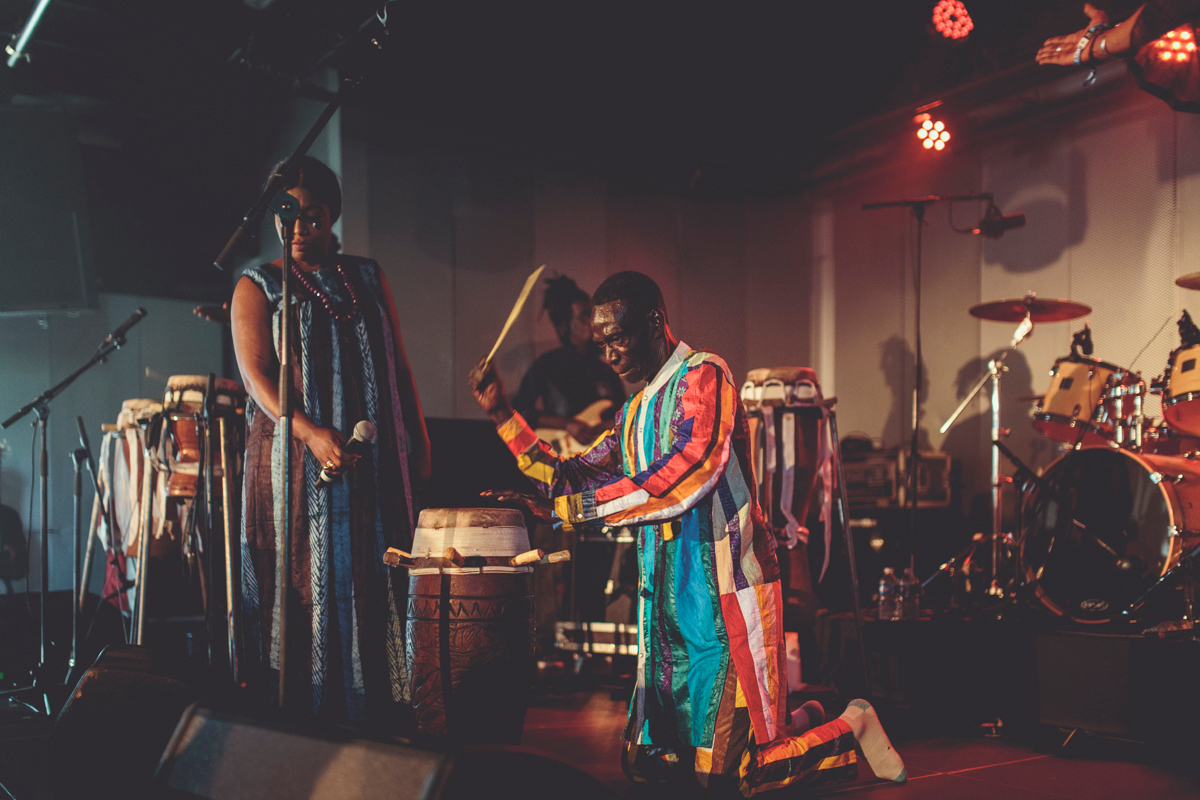- Nuits Sonores' 15th edition showed the festival to be one of Europe's best. The breadth of the event is remarkable, with countless venues in Lyon taking part. As such, the festival is a showcase for the city itself. You travel from place to place experiencing the famous architecture and supremely French gastronomic culture. The crowd at Nuits Sonores also mirrors Lyon's classy vibe. They're mostly overwhelmingly young, local and ridiculously well-dressed. The festival spanned five days and with over 100 acts billed, there were plenty of fantastic performances. Here are five of the best.
Floating Points
Most of Nuits Sonores' nighttime programme took place in the former factories of Fagor-Brandt, a humongous industrial complex capable of holding 14,000 people. A new venue for the festival, the scale, sound and lighting were world-class. Floating Points, AKA Sam Shepherd, performed his new solo live show in the venue's largest area on Friday. His recent tour, which saw him lead a 12-piece band, allowed him to replicate the virtuosity of his 2015 album, Elaenia, but it wasn't necessarily about making people dance. Contrastingly, these new solo shows are about the electronic side of Floating Points' productions. "Nespole," the meditative opener to his recent tour, morphed into a bassy, beat-driven banger. He played "Arp-3" and an alternative version of "Vacuum Boogie." He even wove in new material—or at least changed his work drastically enough to make it unrecognisable to my ears. The set closed with "Nuits Sonores," a track he debuted at the festival in 2014. The home crowd returned a predictably huge response to their unofficial anthem.
Jamie 3:26
The main daytime events took place in La Sucrière, a former sugar factory that's now a dedicated arts centre. Each of the three days was curated by a different artist. In 2017, they were The Black Madonna, Nina Kraviz and Jon Hopkins. This gave an opportunity to introduce lesser-known acts to a large, enthusiastic audience. The surprise hit was Jamie 3:26, a local Chicago hero whose set in the sun-drenched courtyard delivered powerful party vibes.
Jamie 3:26's style is clearly inspired by the legendary Chicago DJ, Ron Hardy. ("3:26" refers to the address of The Music Box, Hardy's legendary club.) He plays wide-ranging music and his love of aggressive EQing adds fresh energy to his tracks. With a white towel draped around his head, he played classic Chicago house, Afro-beat, disco and off-key acid. This was all delivered with the confidence of a seasoned pro. Even familiar tracks seemed novel in his hands: at one point, he dropped Donna Summer's "I Feel Love" but removed the highs from the first verse, creating a pulsing bass drum for what seemed like an age. When he slammed the vocals back in for the chorus, the reaction was massive. That might sound like a straightforward move, but it's deceptively hard to get right. Jamie 3:26 doesn't have the diehard cult-following other Midwestern DJs enjoy, but with performances like this that may soon change.
Nina Kraviz
The main room of La Sucrière is a huge white space filled with atmospheric strip lighting. The DJ booth sees artists performing in the round, boxed in on all sides by sweaty French revellers. Nina Kraviz, who headlined the Friday, created an intense mood by firing through fast, weird-edged techno. The packed room went absolutely wild.
In Bill Brewster and Frank Broughton's essential DJ handbook, How To DJ (Properly), there's a chapter on "How To Be Great" that contains a particularly perceptive line: "The best DJs play better records—memorable records, records that people notice." Kraviz's set exemplified this. The music was routinely hard but almost every track stuck with you. One particularly bonkers cut featured laser sounds, bell chimes, computer glitches, jet engines and buzzy electro synths. Much of the music shared the stew of influences that make Kraviz's label, Trip, so appealing: '90's techno and IDM references coupled with a sense of drama. She exuded confidence and a certain star quality, mixing records with a cigarette in hand. The crowd fed off the energy, chanting her name during the last 15 minutes of the set. As she signed off with a slice of raucous drum & bass, there was no doubt that this was a DJ at the very top of her game.
Pharoah Sanders
Nuits Sonores might seem primarily like an electronic music festival, but its booking policy is more diverse than comparable events. The boldest booking was probably Pharoah Sanders, who is arguably one of the world's greatest-ever musicians. A jazz pioneer who trained under John Coltrane and Sun Ra, he's a living connection to the genre's golden age. His music can be beautiful and meditative, or wild and unpredictable. Performing after Fatima Yamaha in a huge warehouse, it was hard to known how the 76-year-old would fare. The answer was surprisingly well.
The band opened peacefully and Sanders shuffled, slowly and deliberately, towards the centre of the stage. He looked frail but his blue satin shirt and long, white beard lent him a mystical air. As he began to blow his famous saxophone it became clear that, despite the lack of mobility, he'd lost none of his musical skill. The deep, spiritual jazz wasn't to everyone's tastes, and people left as the set progressed. Later, Sanders moved into more traditional jazz bop, and even managed to dance to one of the more upbeat numbers. Those who remained clapped and cheered along to his final song, so much so that he overran by a considerable margin, oblivious that things had to end. When you're a living legend, you keep to your own schedule.
Mark Ernestus' Ndagga Rhythm Force
Le Sucre has a reputation as one of the world's best small clubs. The closing party, which saw Modeselektor and Maceo Plex play to a tiny audience, was something special. As was a more ordinary night at the venue, featuring Henry Wu and DJ Spinna, where I witnessed a spectacular sunrise from the club's rooftop smoking area. But perhaps the best act I saw in the 700-capacity space was Mark Ernestus' dazzling Ndagga Rhythm Force.
The eight-piece band featured four percussionists playing West African sabra drums, a drum kit and a tiny handheld talking drum that, played unamplified, sounded like the loudest thing onstage. At first it was hard to reconcile the band with Ernestus' techno past as one half of Basic Channel. But as the tracks stretched for 15 minutes or more, the link became more apparent. The band tapped into something deeply emotional. The complicated polyrhythms and Senegalese language were unfamiliar but they connected in a way that everyone understood. The final track saw the keyboarder tapping out insanely fast percussive synth sounds, combining with the drummers to create a powerful mix of live and electronic music. Ndagga Rhythm Force are a must-see band that sound like little else.
Photo credit /
Brice Rob - Lead, Floating Points, Pharoah Sanders
Marion Bornaz - Jamie 3:26
Gaétan Clément - Mark Ernestus' Ndagga Rhythm Force
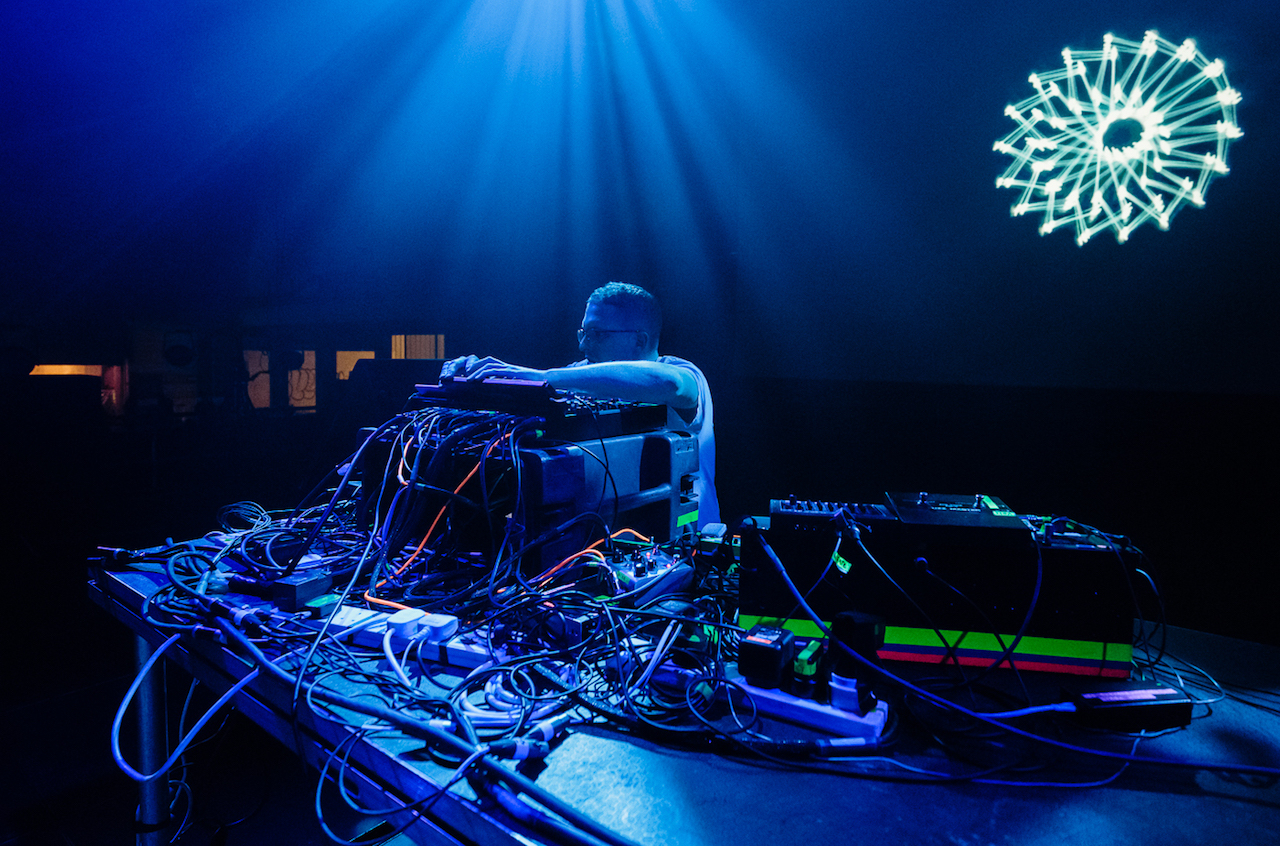 Nina Kraviz The main room of La Sucrière is a huge white space filled with atmospheric strip lighting. The DJ booth sees artists performing in the round, boxed in on all sides by sweaty French revellers. Nina Kraviz, who headlined the Friday, created an intense mood by firing through fast, weird-edged techno. The packed room went absolutely wild. In Bill Brewster and Frank Broughton's essential DJ handbook, How To DJ (Properly), there's a chapter on "How To Be Great" that contains a particularly perceptive line: "The best DJs play better records—memorable records, records that people notice." Kraviz's set exemplified this. The music was routinely hard but almost every track stuck with you. One particularly bonkers cut featured laser sounds, bell chimes, computer glitches, jet engines and buzzy electro synths. Much of the music shared the stew of influences that make Kraviz's label, Trip, so appealing: '90's techno and IDM references coupled with a sense of drama. She exuded confidence and a certain star quality, mixing records with a cigarette in hand. The crowd fed off the energy, chanting her name during the last 15 minutes of the set. As she signed off with a slice of raucous drum & bass, there was no doubt that this was a DJ at the very top of her game.
Nina Kraviz The main room of La Sucrière is a huge white space filled with atmospheric strip lighting. The DJ booth sees artists performing in the round, boxed in on all sides by sweaty French revellers. Nina Kraviz, who headlined the Friday, created an intense mood by firing through fast, weird-edged techno. The packed room went absolutely wild. In Bill Brewster and Frank Broughton's essential DJ handbook, How To DJ (Properly), there's a chapter on "How To Be Great" that contains a particularly perceptive line: "The best DJs play better records—memorable records, records that people notice." Kraviz's set exemplified this. The music was routinely hard but almost every track stuck with you. One particularly bonkers cut featured laser sounds, bell chimes, computer glitches, jet engines and buzzy electro synths. Much of the music shared the stew of influences that make Kraviz's label, Trip, so appealing: '90's techno and IDM references coupled with a sense of drama. She exuded confidence and a certain star quality, mixing records with a cigarette in hand. The crowd fed off the energy, chanting her name during the last 15 minutes of the set. As she signed off with a slice of raucous drum & bass, there was no doubt that this was a DJ at the very top of her game.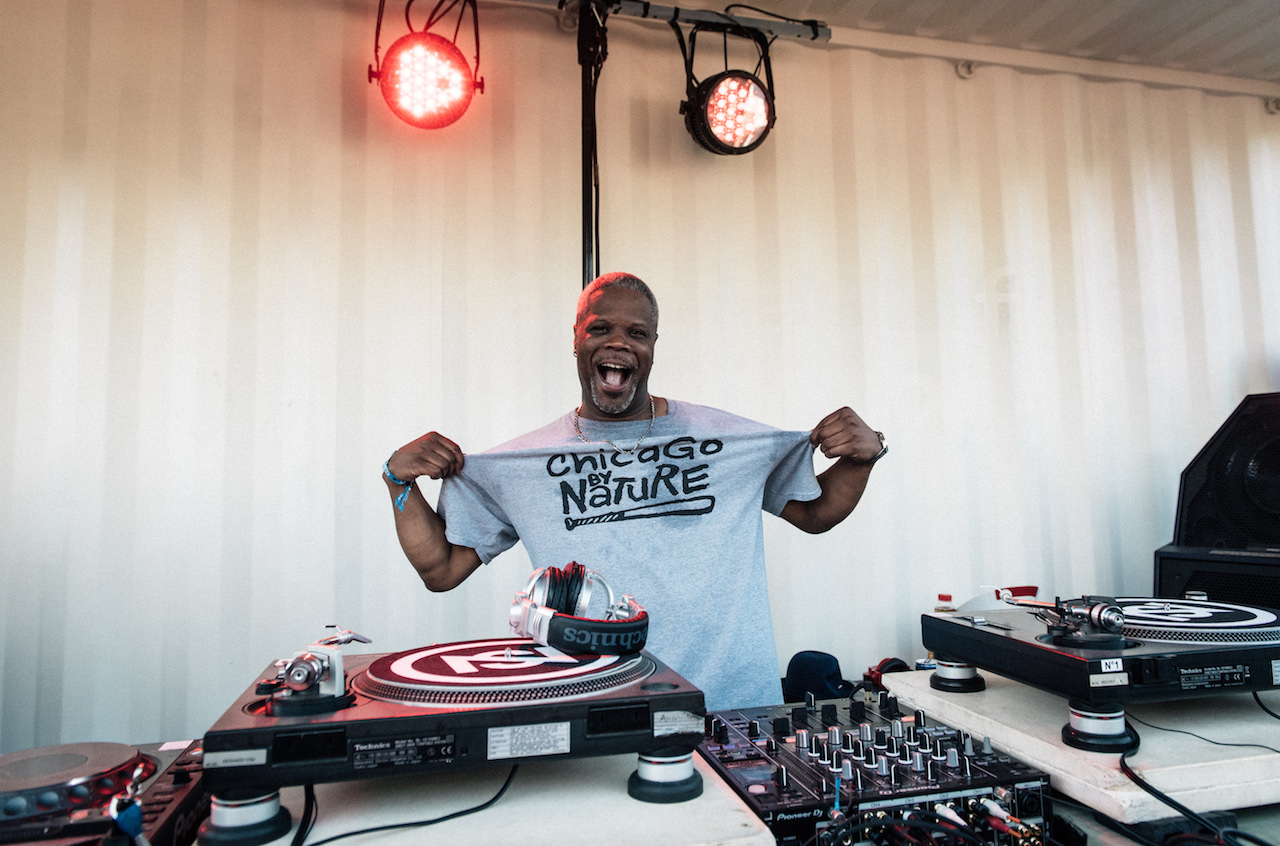 Pharoah Sanders Nuits Sonores might seem primarily like an electronic music festival, but its booking policy is more diverse than comparable events. The boldest booking was probably Pharoah Sanders, who is arguably one of the world's greatest-ever musicians. A jazz pioneer who trained under John Coltrane and Sun Ra, he's a living connection to the genre's golden age. His music can be beautiful and meditative, or wild and unpredictable. Performing after Fatima Yamaha in a huge warehouse, it was hard to known how the 76-year-old would fare. The answer was surprisingly well. The band opened peacefully and Sanders shuffled, slowly and deliberately, towards the centre of the stage. He looked frail but his blue satin shirt and long, white beard lent him a mystical air. As he began to blow his famous saxophone it became clear that, despite the lack of mobility, he'd lost none of his musical skill. The deep, spiritual jazz wasn't to everyone's tastes, and people left as the set progressed. Later, Sanders moved into more traditional jazz bop, and even managed to dance to one of the more upbeat numbers. Those who remained clapped and cheered along to his final song, so much so that he overran by a considerable margin, oblivious that things had to end. When you're a living legend, you keep to your own schedule.
Pharoah Sanders Nuits Sonores might seem primarily like an electronic music festival, but its booking policy is more diverse than comparable events. The boldest booking was probably Pharoah Sanders, who is arguably one of the world's greatest-ever musicians. A jazz pioneer who trained under John Coltrane and Sun Ra, he's a living connection to the genre's golden age. His music can be beautiful and meditative, or wild and unpredictable. Performing after Fatima Yamaha in a huge warehouse, it was hard to known how the 76-year-old would fare. The answer was surprisingly well. The band opened peacefully and Sanders shuffled, slowly and deliberately, towards the centre of the stage. He looked frail but his blue satin shirt and long, white beard lent him a mystical air. As he began to blow his famous saxophone it became clear that, despite the lack of mobility, he'd lost none of his musical skill. The deep, spiritual jazz wasn't to everyone's tastes, and people left as the set progressed. Later, Sanders moved into more traditional jazz bop, and even managed to dance to one of the more upbeat numbers. Those who remained clapped and cheered along to his final song, so much so that he overran by a considerable margin, oblivious that things had to end. When you're a living legend, you keep to your own schedule.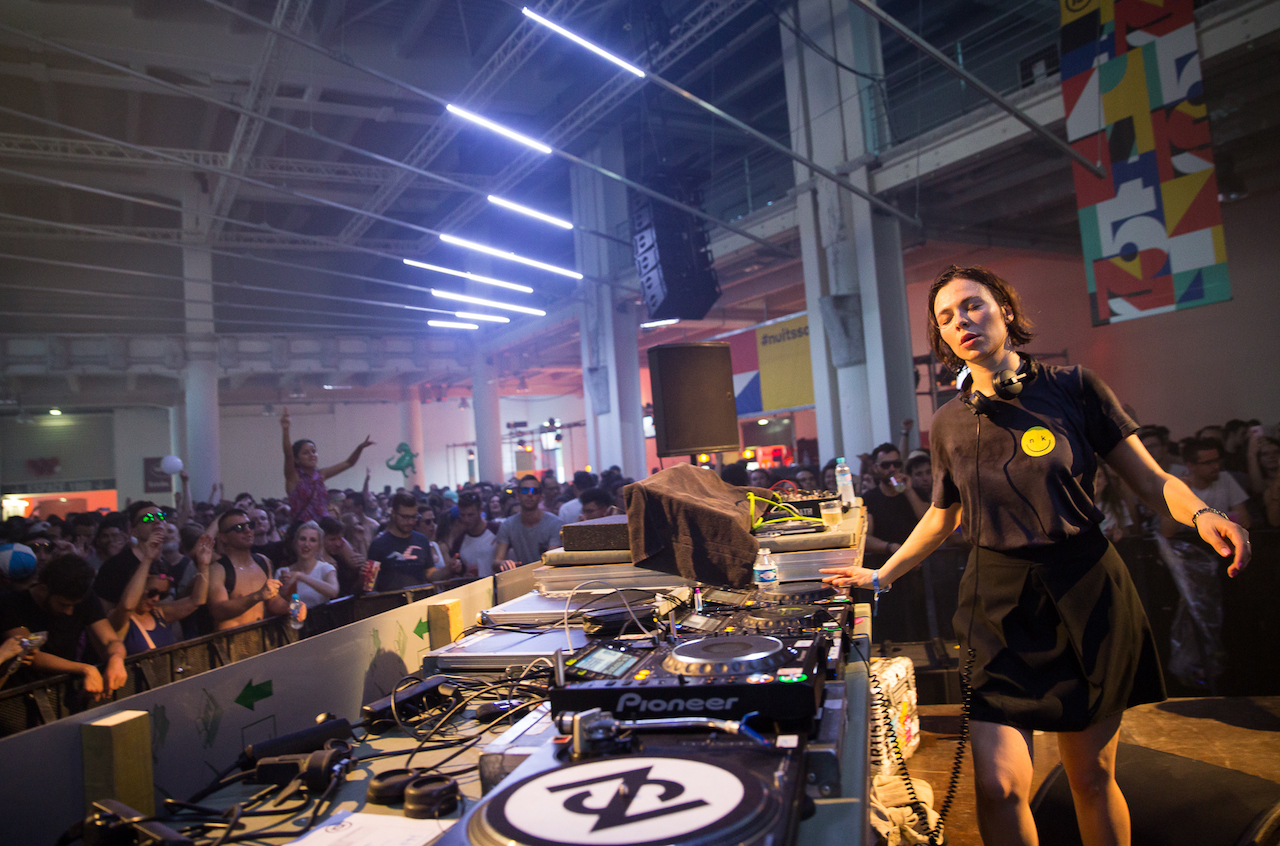 Mark Ernestus' Ndagga Rhythm Force Le Sucre has a reputation as one of the world's best small clubs. The closing party, which saw Modeselektor and Maceo Plex play to a tiny audience, was something special. As was a more ordinary night at the venue, featuring Henry Wu and DJ Spinna, where I witnessed a spectacular sunrise from the club's rooftop smoking area. But perhaps the best act I saw in the 700-capacity space was Mark Ernestus' dazzling Ndagga Rhythm Force. The eight-piece band featured four percussionists playing West African sabra drums, a drum kit and a tiny handheld talking drum that, played unamplified, sounded like the loudest thing onstage. At first it was hard to reconcile the band with Ernestus' techno past as one half of Basic Channel. But as the tracks stretched for 15 minutes or more, the link became more apparent. The band tapped into something deeply emotional. The complicated polyrhythms and Senegalese language were unfamiliar but they connected in a way that everyone understood. The final track saw the keyboarder tapping out insanely fast percussive synth sounds, combining with the drummers to create a powerful mix of live and electronic music. Ndagga Rhythm Force are a must-see band that sound like little else.
Mark Ernestus' Ndagga Rhythm Force Le Sucre has a reputation as one of the world's best small clubs. The closing party, which saw Modeselektor and Maceo Plex play to a tiny audience, was something special. As was a more ordinary night at the venue, featuring Henry Wu and DJ Spinna, where I witnessed a spectacular sunrise from the club's rooftop smoking area. But perhaps the best act I saw in the 700-capacity space was Mark Ernestus' dazzling Ndagga Rhythm Force. The eight-piece band featured four percussionists playing West African sabra drums, a drum kit and a tiny handheld talking drum that, played unamplified, sounded like the loudest thing onstage. At first it was hard to reconcile the band with Ernestus' techno past as one half of Basic Channel. But as the tracks stretched for 15 minutes or more, the link became more apparent. The band tapped into something deeply emotional. The complicated polyrhythms and Senegalese language were unfamiliar but they connected in a way that everyone understood. The final track saw the keyboarder tapping out insanely fast percussive synth sounds, combining with the drummers to create a powerful mix of live and electronic music. Ndagga Rhythm Force are a must-see band that sound like little else.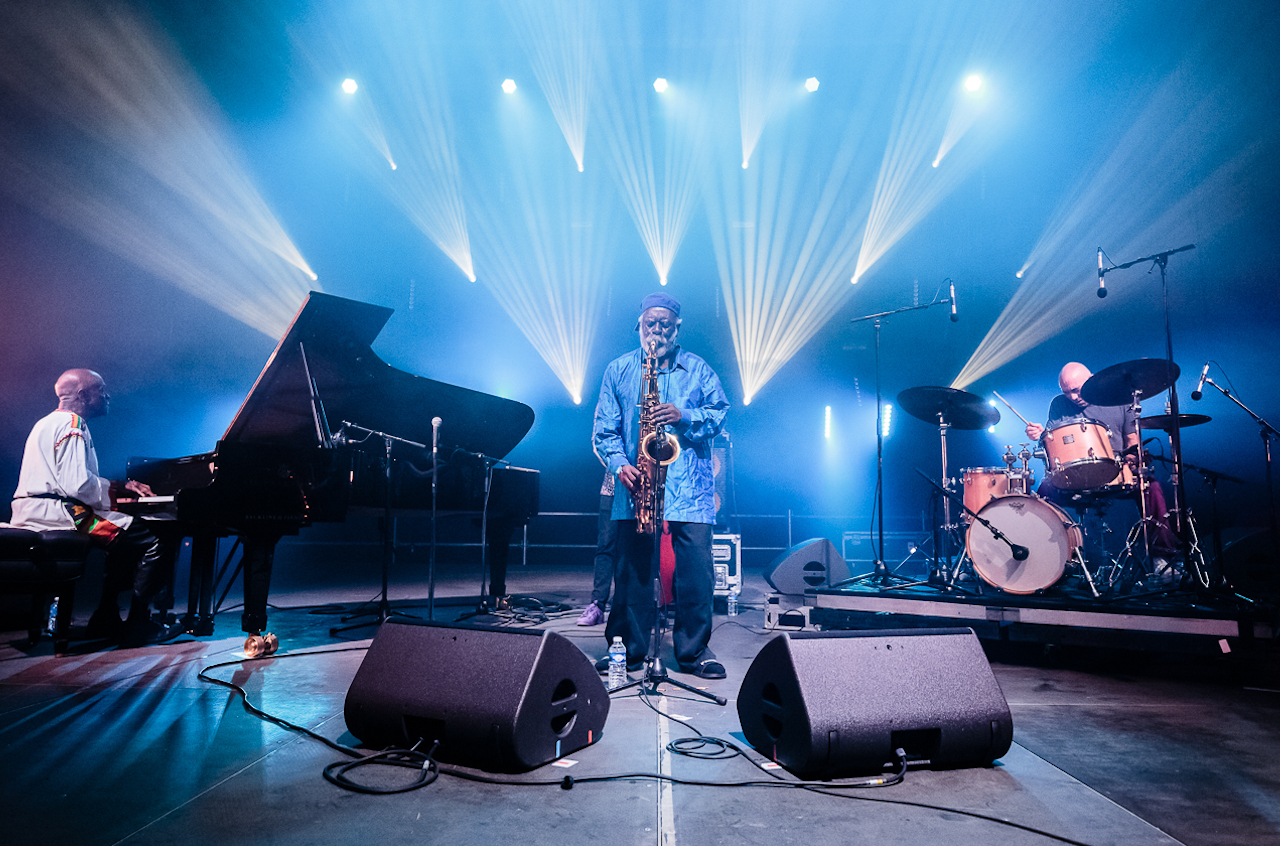 Photo credit / Brice Rob - Lead, Floating Points, Pharoah Sanders Marion Bornaz - Jamie 3:26 Gaétan Clément - Mark Ernestus' Ndagga Rhythm Force
Photo credit / Brice Rob - Lead, Floating Points, Pharoah Sanders Marion Bornaz - Jamie 3:26 Gaétan Clément - Mark Ernestus' Ndagga Rhythm Force